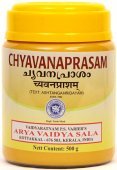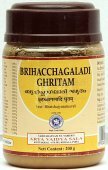Rishabhaka, Ṛṣabhaka: 9 definitions
Introduction:
Rishabhaka means something in Hinduism, Sanskrit. If you want to know the exact meaning, history, etymology or English translation of this term then check out the descriptions on this page. Add your comment or reference to a book if you want to contribute to this summary article.
The Sanskrit term Ṛṣabhaka can be transliterated into English as Rsabhaka or Rishabhaka, using the IAST transliteration scheme (?).
In Hinduism
Kavya (poetry)
Source: Wisdom Library: KathāsaritsāgaraṚṣabhaka (ऋषभक) is the name of an ancient Vidyādhara emperor, as mentioned in the Kathāsaritsāgara, chapter 110. Accordingly, as Akampana and Devamāya said to emperor Naravāhanadatta: “... and Akampana said to him: ‘King, you must now go to the Ṛṣabha mountain for the great ceremony of your coronation’. And thereupon Devamāya also said to him: ‘King, you must indeed do so, for the emperors of old time, Ṛṣabhaka and others, were anointed on that mountain’”.
The Kathāsaritsāgara (‘ocean of streams of story’), mentioning Ṛṣabhaka, is a famous Sanskrit epic story revolving around prince Naravāhanadatta and his quest to become the emperor of the vidyādharas (celestial beings). The work is said to have been an adaptation of Guṇāḍhya’s Bṛhatkathā consisting of 100,000 verses, which in turn is part of a larger work containing 700,000 verses.

Kavya (काव्य, kavya) refers to Sanskrit poetry, a popular ancient Indian tradition of literature. There have been many Sanskrit poets over the ages, hailing from ancient India and beyond. This topic includes mahakavya, or ‘epic poetry’ and natya, or ‘dramatic poetry’.
Ayurveda (science of life)
Kalpa (Formulas, Drug prescriptions and other Medicinal preparations)
Source: Shodhganga: Edition translation and critical study of yogasarasamgrahaṚṣabhaka (ऋषभक) refers to the medicinal plant known as “Malaxis muscifera (Lindley) Kuntze” and is dealt with in the 15th-century Yogasārasaṅgraha (Yogasara-saṅgraha) by Vāsudeva: an unpublished Keralite work representing an Ayurvedic compendium of medicinal recipes. The Yogasārasaṃgraha [mentioning ṛṣabhaka] deals with entire recipes in the route of administration, and thus deals with the knowledge of pharmacy (bhaiṣajya-kalpanā) which is a branch of pharmacology (dravyaguṇa).
Nighantu (Synonyms and Characteristics of Drugs and technical terms)
Source: WorldCat: Rāj nighaṇṭuṚṣabhaka (ऋषभक) is the Sanskrit name for a medicinal plant possibly identified with Microstylis muscifera Ridley which is a synonym of Malaxis muscifera (Lindl.) or “fly bearing malaxis” from the Orchidaceae or “orchid” family of flowering plants, according to verse 5.14-16 of the 13th-century Raj Nighantu or Rājanighaṇṭu.
Ṛṣabhaka is mentioned as having twenty synonyms: Ṛṣabha, Gopati, Dhīra, Viṣāṇī, Dhūrdhara, Vṛṣa, Kakudmān, Puṅgava, Voḍhā, Śṛṅgī, Dhurya, Bhūpati, Kāmī, Ṛkṣapriya, Ūkṣā, Lāṅgulī, Gau, Bandhura, Gorakṣa and Vanavāsī.
Properties and characteristics: “Ṛṣabhaka is cooling (śīta) and sweet (madhura). It controls diarrhoea and raktapitta (bleeding disorders). It increases kapha and semen and is indicated in burning, tuberculosis and fevers”.
Unclassified Ayurveda definitions
Source: eJournal of Indian Medicine: Jajjaṭa’s Nirantarapadavyākhyā and Other Commentaries on the CarakasaṃhitāṚṣabhaka (ऋषभक) refers to Malaxis muscifera (Lindley) Kuntze, a synonym of Microstylis muscifera (Lindley) Ridley, and is the name of a medicinal plant mentioned in the 7th-century Nirantarapadavyākhyā by Jejjaṭa (or Jajjaṭa): one of the earliest extant and, therefore, one of the most important commentaries on the Carakasaṃhitā.—(Cf. Indian Medicinal Plants, Arya Vaidya Sala 3:371, 1993-96.).—(Cf. Glossary of Vegetable Drugs in Bṛhattrayī 55, Singh and Chunekar, 1999)

Āyurveda (आयुर्वेद, ayurveda) is a branch of Indian science dealing with medicine, herbalism, taxology, anatomy, surgery, alchemy and related topics. Traditional practice of Āyurveda in ancient India dates back to at least the first millenium BC. Literature is commonly written in Sanskrit using various poetic metres.
Languages of India and abroad
Sanskrit dictionary
Source: DDSA: The practical Sanskrit-English dictionaryṚṣabhaka (ऋषभक).—
1) Name of a medicinal plant.
2) A bull
3) Name of a mountain; Ks.
Derivable forms: ṛṣabhakaḥ (ऋषभकः).
Source: Cologne Digital Sanskrit Dictionaries: Monier-Williams Sanskrit-English Dictionary1) Ṛṣabhaka (ऋषभक):—[from ṛṣ] m. a bull, [Nighaṇṭuprakāśa]
2) [v.s. ...] a kind of medicinal plant, [Suśruta; Caraka; Bhāvaprakāśa]
3) [v.s. ...] Name of a king, [Kathāsaritsāgara]
4) [v.s. ...] of a mountain, [Kathāsaritsāgara cx, 148.]
[Sanskrit to German]
Sanskrit, also spelled संस्कृतम् (saṃskṛtam), is an ancient language of India commonly seen as the grandmother of the Indo-European language family (even English!). Closely allied with Prakrit and Pali, Sanskrit is more exhaustive in both grammar and terms and has the most extensive collection of literature in the world, greatly surpassing its sister-languages Greek and Latin.
Kannada-English dictionary
Source: Alar: Kannada-English corpusṚṣabhaka (ಋಷಭಕ):—[noun] a kind of medicinal plant.
--- OR ---
Ṛṣabhaka (ಋಷಭಕ):—[noun] a medicinal plant .
Kannada is a Dravidian language (as opposed to the Indo-European language family) mainly spoken in the southwestern region of India.
See also (Relevant definitions)
Starts with: Rishabhakavi.
Query error!
Full-text (+5): Indraksha, Rishabha, Kami, Pungava, Kakudman, Gopati, Gau, Dhurya, Bhupati, Uksha, Bandhura, Vishani, Vodha, Rikshapriya, Dhurdhara, Jivanapancamulani, Shringi, Goraksha, Vanavasin, Ashtadashamula.
Relevant text
Search found 12 books and stories containing Rishabhaka, Ṛṣabhaka, Rsabhaka, Ṟṣabhaka, Ṟsabhaka, Rshabhaka; (plurals include: Rishabhakas, Ṛṣabhakas, Rsabhakas, Ṟṣabhakas, Ṟsabhakas, Rshabhakas). You can also click to the full overview containing English textual excerpts. Below are direct links for the most relevant articles:
International Ayurvedic Medical Journal
Review article-himavan agada in mandali sarpavishachikitsa < [2017, Issue VII, July]
Ayurvedic approach on computer vision syndrome < [2013, Issue 3 May-June]
Unveiling the prominence of vajikarana dravyas in the brihat-trayee < [2023, Issue 10. October]
Atharvaveda and Charaka Samhita (by Laxmi Maji)
Gynaecology and Pediatrics in the Atharvaveda < [Chapter 3 - Diseases and Remedial measures (described in Atharvaveda)]
Classification of Drugs in the Caraka-Saṃhitā < [Chapter 4 - Diseases and Remedial measures (described in Caraka-saṃhitā)]
1b. Study of Fever (Jvara) in the Caraka-Saṃhita < [Chapter 5 - Diseases and Remedies in Atharvaveda and Caraka-Saṃhitā]
The folklore medicinal orchids of Sikkim < [Volume 33 (issue 2), Oct-Dec 2013]
Charaka Samhita (English translation) (by Shree Gulabkunverba Ayurvedic Society)
Chapter 2b - Milk-saturated rice and other preparations (asikta-ksirika) < [Cikitsasthana (Cikitsa Sthana) — Section on Therapeutics]
Chapter 11 - The therapeutics of Pectoral Lesions (kshata-kshina-cikitsa) < [Cikitsasthana (Cikitsa Sthana) — Section on Therapeutics]
Chapter 2 - The Pharmaceutics of Bristly luffa (jimutaka-kalpa) < [Kalpasthana (Kalpa Sthana) — Section on Pharmaceutics]
World Journal of Pharmaceutical Research
Ayurvedic treatment of ADHD using Panchendriya Viverdhan Tail Nasya < [2017: Volume 6, August issue 8]
Ancient concepts of cosmetology in ayurveda < [2017: Volume 6, January issue 1]
Review article on rakshakarma and dhoopana in kaumarbhrutya < [2023: Volume 12, September special issue 16]
Arka Kalpana - A Review of Traditional and Modern Methods < [Volume 11, Issue 3: May-June 2024]
Kalka Dravya's Role in Niruha Basti Preparation: A Conceptual Analysis < [Volume 10, Issue 5: September-October 2023]
A Review Article on Vishopadrava Chikitsa with special reference to Brihathrayee < [Volume 9, Issue 2: March-April 2022]
Related products
(+11 more products available)





